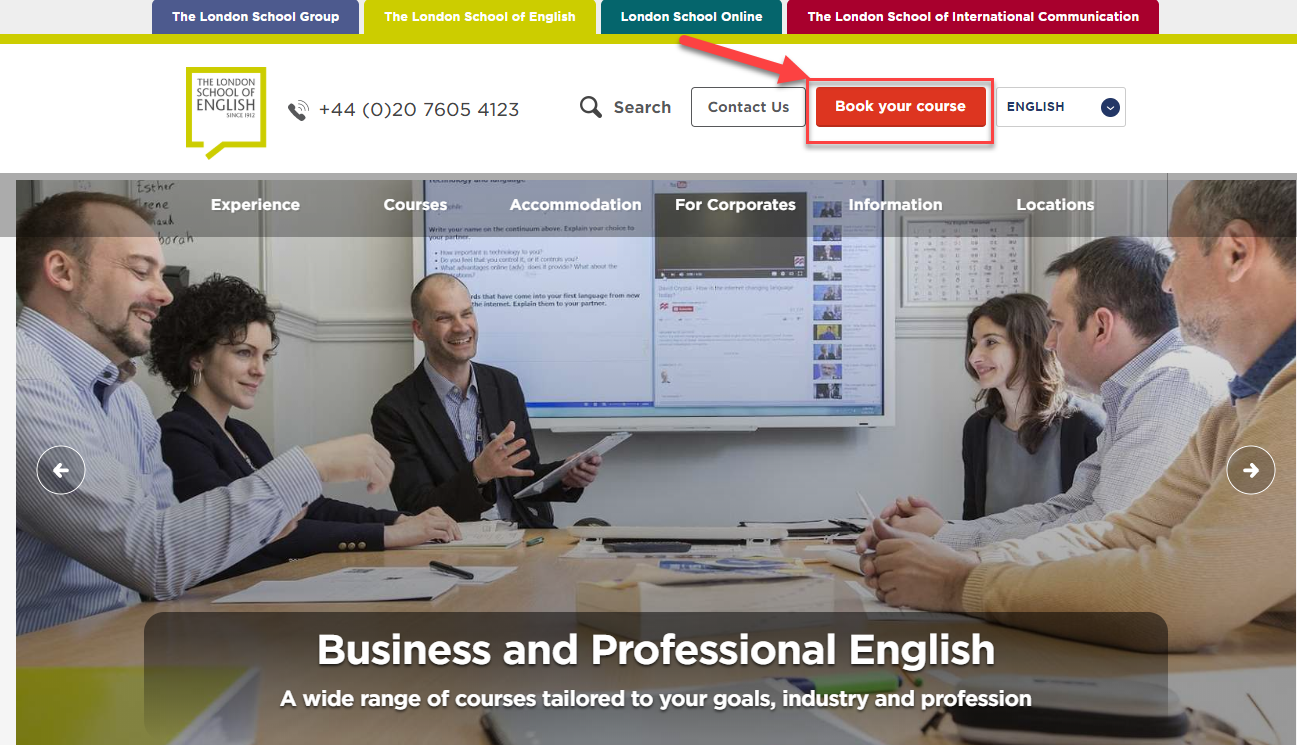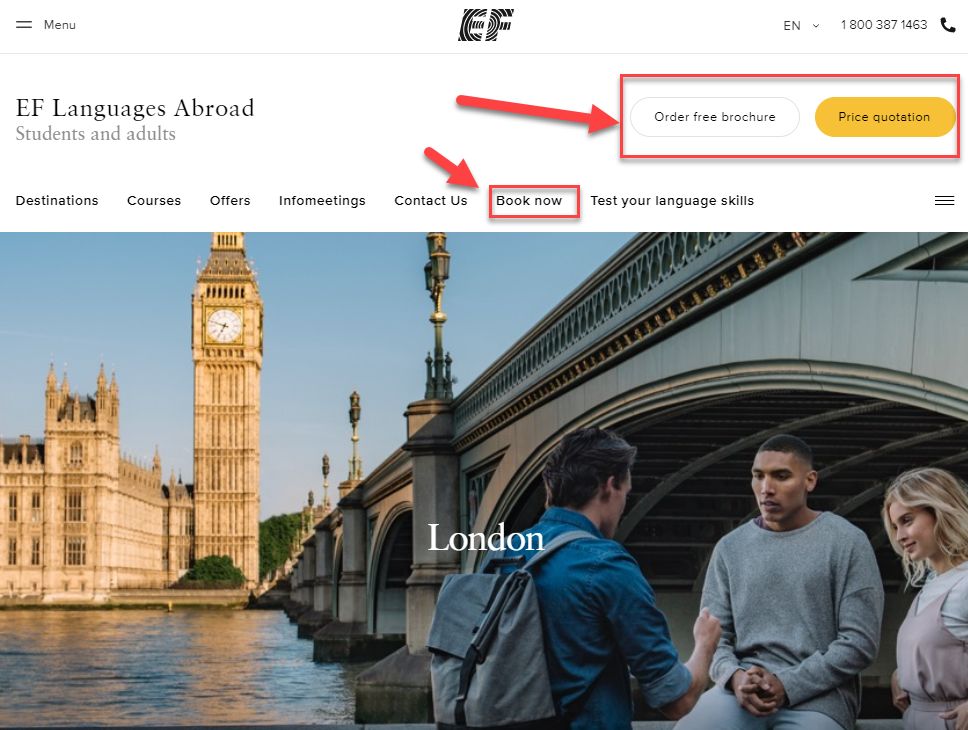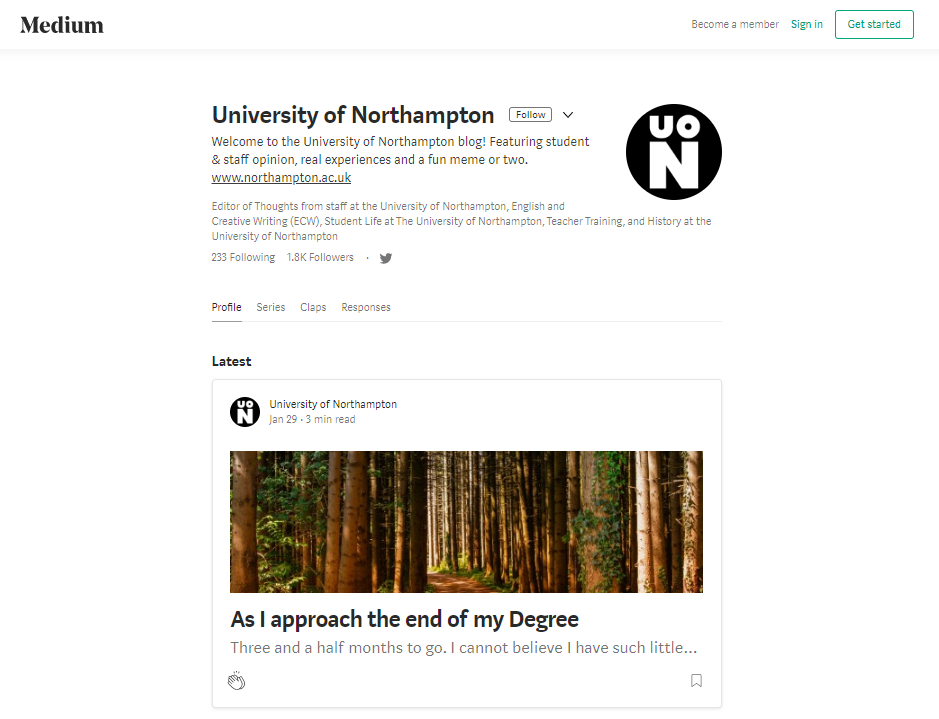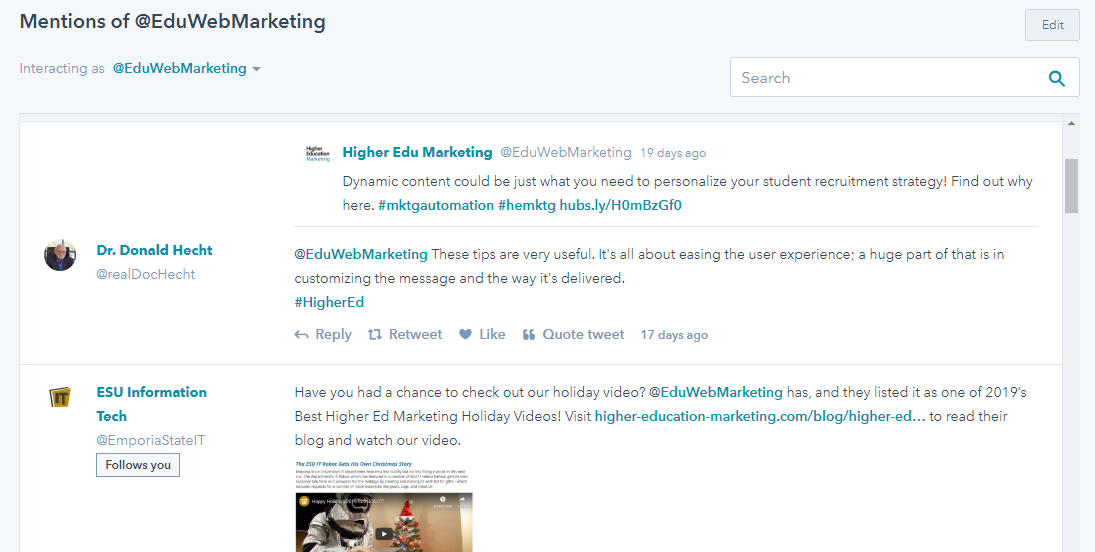
There’s no getting around the fact that education is a competitive field. From universities, to language schools, to the K-12 sector, schools at all levels face a battle to convince prospective students to choose them over other, similar institutions.
Your digital marketing efforts serve as a tool by which to differentiate your school from its competitors. Through creating valuable, relevant content, improving your online visibility, and working to engage and connect with your audience, you can ensure that prospects will be more likely to study with you.
But what if your competitors are doing this better than you? As hard as you and your team may be working, there are most likely still things you could learn from your competition’s creative strategies, campaign tactics, and marketing and admissions processes.
And if you do have a competitive advantage in certain areas, you’ll want to make sure that you are making the most of it.
Competitor benchmarking involves comparing your school’s activities with your competition’s to understand just how you stack up against them, what you can improve, and what opportunities you can capitalize on.
Here are six crucial areas of student recruitment where this exercise can be particularly useful.

1. Comparing Your Website UX to Competing Schools
One of the most telling exercises in competitor analysis for schools is also one of the simplest.
As we’ve mentioned before, evaluating website user experience (UX) does not necessarily require any specific technical expertise. Because UX is all about how intuitive and easy to navigate your website is for the average user, it is often helpful to gather feedback on it from ordinary people rather than designers and developers – although their knowledge of underlying UX principles and best practices can be helpful in figuring out how to make improvements.
You can do a quick evaluation of your competitor’s UX by enlisting members of your team, regardless of their role or expertise in this area, to log onto to competing school websites and attempt to navigate them as a prospective student would.
Ask them to attempt to find out about specific programs and courses, financing, accommodation, or any other key motivations and pain points of your shared target personas and note down what they find. You can also suggest that they move towards making an inquiry, requesting a quote, or submitting an application, and track the path they took to get there.
Example: Let’s briefly compare the conversion path from the homepages of two ESL schools in London, starting with The London School of English.
You can see here that a prominent CTA button has been placed in the main banner of their homepage, giving prospects an instant and obvious path to proceed towards booking.

Now let’s look at EF London, who’ve taken a different approach:

The option to book is still in the main navigation, but it is much less prominent. Instead, the school have opted to give space to larger action buttons that allow prospects to order a brochure or get a free price quote, both of which are likely to appeal to those who are still considering their options.
Neither approach is right or wrong, and both have their advantages and disadvantages, but which do you think prospects will respond to more? Will they like the option of pricing out their course before they book, or is it just needlessly extending the path towards conversion? Or alternatively, is there a third option that would combine the best of both approaches?
This is what evaluating your competitor’s UX is all about. On each site, try to put yourself in the shoes of one of your prospects, and ask yourself how satisfying the experience has been. Was the information you wanted easy to find? Was your overall impression of the school positive? How easy was it for you to take the next step?
As you do this, have someone complete the same exercise on your own website. It’s preferable if this task is assigned to an outsider, as your staff members will likely have a lot of experience navigating your own site, and naturally find it easier than an average prospect would.
From there, collate your findings on both your school and its competitor’s UX and compare. This can done on a simple spreadsheet, with the comments and observations of your team members grouped into specific categories.
One you’re done, you’ll have a rudimentary picture of how your UX rates against these other schools, and where it can be improved upon. Not bad for just a few hours of work!
2. Evaluating Your Competitor’s Content Marketing Efforts
If you feel like you’re falling behind your competitors when it comes to attracting students online, your content could be a huge part of the problem.
Content marketing is one of the key drivers of web traffic and engagement, and those that provide quality, valuable resources will always have an advantage over those that don’t. With that in mind, analyzing content can be an eye-opening exercise in competitor benchmarking for schools.
You should start by collating a list of the content you want to evaluate. This can be a full inventory of everything your competitors have online, or a more limited sampling if you don’t have time to devote to more in-depth analysis.
The important thing is that it takes in the full spectrum of their content marketing mix, and accounts for different types of content across different channels, such as:
- Blogs
- Infographics
- Videos
- Webinars
- eBooks, whitepapers and other downloadable resources
- Presentations
Be sure to account for any content that may be on digital channels other than their website. For instance, videos may live on their website, but also on their YouTube channel. A growing number of schools are utilizing Medium as an additional publishing platform for blogs, too, while SlideShare is often used to share presentation decks.
Example: The University of Northampton regularly posts on Medium.

Your analysis should begin at a macro level. Look at the quantity of content that your competitors are creating, the frequency of their publishing schedule, the variety of formats they are using, and the length of the content. If you find that they are producing more than you, it probably means you need to devote more resources to your efforts.
If you are targeting international students, it may also be worth paying attention to whether your competitors are producing localized or multilingual content for your shared target markets, as this could give them a significant advantage over you.
You should look at the mixture of topics they cover, too. Are there areas of your courses or their relevant subject areas and industries that they cover in more depth than you? Do they focus more on specific topics that you consider less important? Do they create content around topics you don’t cover at all? If so, it might be worth thinking about why.
Above all else, you need to evaluate quality. Looking at quantifiable measures such as search rankings, social shares, and comments on web pages can help to a degree in this regard, but the most important part of the exercise is simply reading, watching and absorbing the content.
Evaluate the design, structure, and tone of their content in comparison to similar efforts from your own school, and try to discern which is better, what strengths and weaknesses each one has, and what you can learn from how your competitors have approached their work.
This kind of analysis takes a critical eye, as well as a degree of objectivity. Again, this is very much an area where it can be valuable to outsource this work to external experts in order to get some unbiased perspective.
3. SEO and Keyword Competitor Benchmarking for Schools
When you analyze your competitor’s content, you should also take time to evaluate how well-optimized it is for search engines. Look at elements such as page titles, headings, and body text to see if your competition is integrating relevant keywords. If they aren’t and you are, you are already one step ahead.
You can also carry out a competitive ranking analysis using keyword tracking tools like Moz to compare and contrast your rankings in pertinent searches to your competitors. This will give you clear picture of how your SEO efforts compare.
Example: An excerpt from a competitive ranking analysis HEM conducted for school looking to promote an accounting program in Toronto. The school was ranked against three competitors, and its own ranking is the farthest on the left in both the Canada and Toronto blocks (both highlighted). What’s your assessment of their position?

If you find yourself ranking significantly below them in certain searches, you can resolve to target those keywords in your future content marketing efforts to help redress the balance. You could also use targeted paid search advertising campaigns to ensure your school is visible in certain searches where you lag significantly behind.
4. Mystery Shop Your Competitor’s Follow-Up Processes
After a prospect makes an inquiry with one of your competitors, what happens next? How diligent are they in following up? What channels do they use? How persuasive are their admissions team?
Finding all this out can be a challenge, but it isn’t impossible. If you are getting a higher education digital marketing audit from external experts, one novel way of evaluating this is to arrange a ‘mystery shopping’ exercise. This is where you have people make inquiries about your competitor’s school and programs online and see what kind of response they get.
Mystery shopping can be an excellent way to get a firsthand look at the follow-up timeline, channels, and processes that your competitors are using to see how they compare to your own. You can see how many contact attempts they make, what touchpoints they use, and what kind of email and SMS content they send prospects.
In doing so, your team can have a chance to reflect on how much more or less they do when measured against their competition, how efficient their process is, and how engaging their efforts are. It could be the first step in transforming your follow-up process for the better.
5. Evaluate the Social Media Presence of Your Competition
Because of the channel’s interactive, communal nature, comparing your presence on social media to your competitors is one of the more straightforward aspects of a digital marketing audit for schools.
The most instructive metric of all is likely going to be your respective follower counts, which are the true litmus test of how well you’re doing on social.
Example: Let’s quickly compare two competing business schools in the same city on Facebook. Rotterdam Business School has over 24,000 page likes and followers:

The nearby Rotterdam School of Management, however, has over 28,000 page likes and 29,000 followers.

Both institutions have a healthy Facebook presence, but those extra few thousand followers and the visibility that goes along with them could give RSM an extra edge.
While follower and like counts will give you a basic read on how you measure up, you should also pay attention to the level of engagement you and your competitors are generating from posts, such as likes, shares, and comments.
Some social networks will give you a helping hand with this. On Facebook Insights, for instance, the Pages to Watch section allows you to select 5 or more pages and track their total page likes, posts and engagement on a week-to-week basis.
Example: Higher Education Marketing uses Facebook Insights to keep track of our competitors.

If your results are disappointing, you’ll want to take a closer look at your competitor’s posting strategies. Try to identify what they are doing that your school isn’t, and what actionable steps you can take to improve. You won’t catch up overnight, but you should be able to make some gains over time.
6. Engage in Social Listening to Gauge Your Reputation Compared to Other Schools
Social media monitoring and social listening can also be highly instructive when trying to benchmark your school against your competitors. If you use marketing automation or social media management software, you can track mentions of your school and its competitors, as well as any respective branded hashtags you are using, to see what users are saying about you.
Example: HubSpot allows you to monitor mentions of specific Twitter handles and hashtags.

This isn’t just helpful in gauging your social media performance – it will also serve as a snapshot of your respective reputations among your online communities.
For instance, you may find that your students, parents, and alumni don’t mention you often online, while your competitor’s community goes out of its way to lavish praise upon them.
This could be a sign that you’re simply not engaging your audience enough online, but it could also point to a larger problem in how satisfied they are with your courses and services. As a general rule of thumb, if your community aren’t acting as your advocates online, you should be trying to do more.
Another big part of social listening is online reviews, which are becoming increasingly important to the decision-making process of students. You should compare reviews with your competitors on Googly My Business and Facebook, as well as any relevant education review sites.
If your reviews are more negative than your competitors, or you are just not getting enough, then you need to work to try and fix the issue. While it’s impossible to control how and how often you are reviewed online, you can still improve the situation by encouraging your students and alumni to post reviews through email and social media campaigns, as well as by taking steps to improve your profiles on popular review platforms.
There is, of course, much more you could do to analyze your competitor’s presence, from evaluating their paid lead generation efforts to undertaking a more in-depth assessment of their course offerings compared to yours.
The best place to start is probably any area where you feel you are falling short – channels where you could be doing more, where you have demonstrably inferior results, or even just things you have noticed about your competitor’s strategies that you admire or feel they do well. Once you address the aspects of your digital marketing efforts you feel will have the most impact on your results, you’ll be off to a great start.






